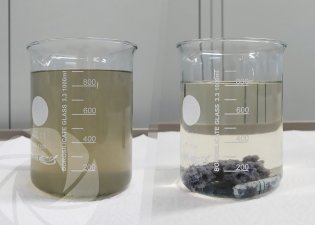Ammonia, nitrogen, and COD concentrations are above regulations
Our client has two distinct types of discharge: a "metallic" discharge of about 20 m3/day and an "organic" discharge of 10 m3/day, at a constant rate of 24 hours a day, 5 days a week. Currently, our client has a treatment plant to treat the "metallic" discharge. Four liquid products are used in the treatment process: sodium bisulfite, a coagulant, a boron solution and a flocculant which must be prepared in solution. In spite of an apparently very complete process, the latter does not allow our Client to meet the discharge standards for its so-called "metallic" effluent, with regular exceedances for heavy metals, ammonia, nitrogen and COD values. In addition, the existing process does not allow the treatment of the so-called "organic" effluent. To do so, it must be stored and reprocessed by an external service provider.


